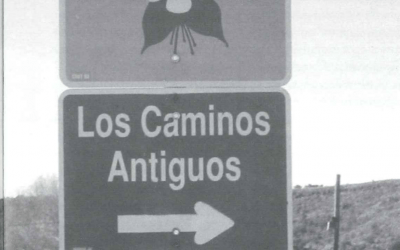Brazil
Did you know that Brazil has awe-inspiring sites, such as the Iguazu Falls, the Itaimbezinho, and the Amazon rainforest, as well as 2,000 miles of virtually uninterrupted soft white beaches? That in the Afro-Brazilian state of Bahia, there are more than 154 historical churches in the capital of Salvador?
Are these places worthwhile to visit? English Prime Minister Tony Blair thinks so. He recently visited the Falls during his state visit to Brazil. The Iguazu Falls act as a triple land border, or the meeting point of Paraguay, Brazil and Argentina. They are not the biggest falls in the world, but certainly the most beautiful. Stories say that when Eleanor Roosevelt visited them she exclaimed: “Poor Niagara”. The setting of Iguazu is far more graceful and, unlike Niagara, there is much less tourist commercial activity to detract from the natural drama. Wooden toucans are as tacky as it gets.
In Iguazu, 270 waterfalls spread out like a lace curtain for nearly two miles. One can’t see them all at once from ground level for they extend far beyond the line of vision. Native Indians saw this as an auspicious place. The romantic version of the falls’ origin is that two young Indian lovers were canoeing down the river, escaping the wrath of a God, when he made the riverbed collapse. As the lovers hurtled over the precipice, the girl turned into a rock and the man into a tree standing over her. In reality, the falls were probably created by a lava flow that stopped abruptly, the result of which seems equally miraculous to visitors.
If this scenario was able to enchant Eleanor Roosevelt and Tony Blair, why don’t more visitors seek to discover these wonders? Brazil only attracts five million tourists, one-fourth of the Caribbean’s annual visitors. Some would argue that it is a problem of distance or marketing; others cite the lack of infrastructure. Others would contend that the lack of government incentives, low investments in human capital and mismanaged travel agencies might also be part of the explanation.
SOME INITIATIVES TO IMPROVE THE TOURISM INDUSTRY IN BRAZIL
The tourism industry that directs travelers to developing countries such as Brazil is a complex, multi-layered network. Tourism mobilizes more than 50 productive sectors in developed markets, requiring a large group of trained technicians and professionals. It includes travel agencies, tour operators, airlines, cruise lines, car rental agencies, credit card companies, public relation firms, advertising companies, tourism bureaus, and the media. In the host country, inbound tour operators, ground transporters, guides, accommodation facilities, national tourism bureaus, national and private parks and other recreational sites, cultural and craft centers are the major players. More often than not, the travel industry is supported by government policies and regulations, infrastructure projects, and frequently, direct subsidies as well as by a wide array of commercial banks, international financial and aid institutions. The (World Tourism Organization) WTO estimates that 1 in each 16 workers is employed in the sector. The workers are basically engaged in two modalities of tourism: the senders and recipients of tourism.
The total number of visitors to Brazil’s two most national and internationally recognized tourist poles, the metropolis of Rio de Janeiro and the heritage site of Bahia, is less than that of Cancun, Mexico. The type of enclave tourism practiced in Cancun, Acapulco and the Caribbean is not necessarily the model Brazil seeks to follow. According to the Economist Intelligence Unit, underdeveloped tourism infrastructure, high levels of crime and high prices before the 1999 currency devaluation have combined to curb the growth of tourism, despite Brazil’s physical and cultural assets.
During the 1990s Argentines represented more than 40% of international visitors (1.744 million in 2000). Flows from neighbors in the region are subject to the volatility of their economies. The current Argentine economic crisis is expected to strongly stem the flow of Argentines to Brazilian beaches. Other than Argentines, the top five groups of foreigners visiting Brazil in 2000 were from the United States (648,000), Uruguay (403,000), Paraguay (371,000), Germany (290,000) and Italy (202,000). Surveys indicate that the primary reason for visiting Brazil was tourism, specifically 71%, other reasons were business travel (23%) and conferences and meetings (4.5%). Leisure tourists averaged 12 days in the country and spent an average of $84.38 per day. Most of them visit Brazil in the summer time between December and March.
While macroeconomic instability inhibits the steady growth of Brazil’s tourist industry, another significant problem is the fact that Brazil sends more Brazilian tourists to other countries than foreign tourists visit Brazil. According to Brazil’s government-run tourist organization, Embratur, sending tourism grew 495%, compared to the 17% of receptive traffic in the last 15 years. Accordingly, Soletur—Brazil’s largest tour operator—focused its business strategy on emissive tourism, as this was the most lucrative and dynamic segment of the tourist industry. However, even the stability of this strategy was challenged with the decline in the number of Brazilians traveling abroad resulting from the September 11th tragedy. The stark tragedy—combined with already existing management problems—led to the firm’s overnight collapse.
With the bankruptcy of the largest tour operator in Brazil, the remaining two major competitors are fighting head to head to increase their market share. According to Braztoa (Brazilian Association of Tour Operators), CVC and Varig Travel dominate the market. Varig Travel recently acquired Panexpress Tours, the fifth largest operator in the country, and is expected to lead the market with earnings of more than $200 million in 2002.
Varig’s strategy is consistent with global trends. The largest European and American tour operators focus their business strategies on the vertical integration of their “production chains.” By owning or having significant ownership in the multiple segments of the tourist industry, such as the transportation, hospitality and entertainment sectors, large multinationals hope to be able to take care of a tourist’s entire stay abroad. As Brazil’s largest airline, Varig already has one of the most important assets of the tourism chain—the planes. Integration of tour operators aiming to achieve economies of scale and scope is one of the main factors that drives the success or failure of the tourism industry.
Although in its infancy stage, the Brazilian tourism industry is already undergoing a transformation. Southern states are beginning to receive large numbers of tourists from neighboring countries, and cities like Florianopolis in Santa Catarina State have become important coastal resorts. New types of tourism, including ecotourism, are developing from the natural attractions of almost untouched Amazonian forest and the diverse animal life of the Pantanal marshland. Ecotourism is gaining a strong push in all the states of Brazil, even the MST (Movimento dos Sem Terra), the largest landless movement, is attracting curious foreigners to their acampamentos.
However, Rio de Janeiro remains the most popular destination for 40% of tourists to Brazil. In addition to its traditional attractions, the city is improving sport aquatic activities and tours to favelas as a way to better integrate the local population with the tourist industry.
But, there are several constraints. Brazil needs to focus on augmenting the number of new and repeat visitors, as well as improving the management and skills of agents working in the industry. The Brazilian government has introduced a government initiative to stimulate the tourism through the PNMT, Programa Nacional de Municipalização do Turismo (National Program of Tourism Municipalization). Aimed at giving local municipalities incentives towards developing their own regional infrastructure and strategic plans. The program hopes to multiply and diversify the number of tourist destinations. In the coming years Brazil’s tourist industry will benefit from increased investments in hotel infrastructure. The Brazilian National Economic and Social Development Bank has been providing subsidized credit lines with favorable rates of interest to enterprises wishing to construct hotels in the Northeast.
With its potential for increasing the number of jobs in cities and rural areas alike, tourism has been recognized as an important part of the country’s strategy to reduce income inequality. As a service sector, hotels and other tourism operations require employees who are better trained. After reforms in the 1996 Educational Law, which eased the process of accrediting tertiary educational institutions, a great number of bilingual and skillful young tourist professionals are being schooled. It is expected that these new generations of professionals will be able to offer to foreigner visitors the same quality of service experienced in other mature markets. It is also expected that this professionals will find better ways to attract you to visit Brazil. If not, Brazilians will say “poor Americans” and “poor Europeans” who are not able to recognize the enriching experience of visiting Brazil’s seven wonders.
Former DRCLAS Visiting Scholar Gilmar Masiero (g_masiero@yahoo.com) works as an Associate Professor of International Business and Management at the State University of Maringa in Parana, Brazil. Masiero obtained his M.A. and his Ph.D. in Management and Economics at the Escola de Administraçao de Empresas de São Paulo, da Fundaçã Getúlio Vargas, in São Paulo, Brazil. His major fields of interest include strategies and decision-making processes, organizational studies, international trade and investment, and economic development in a globalized world. He has been visiting research fellow at IDE/Tokio; USP/São Paulo; UCSD/San Diego; UNICAMP/Campinas and KIEP/Seoul, as well as DRCLAS/Cambridge. He wishes to thank the Conselho Nacional de Desenvolvimento Científico e Tecnológico (the Brazilian Council for Scientific and Technological Development) for supporting his research.
Related Articles
Editor’s Letter: Tourism
Ellen Schneider’s description of Sandinista leader Daniel Ortega in her provocative article on Nicaraguan democracy sent me scurrying to my oversized scrapbooks of newspaper articles. I wanted to show her that rather than being perceived as a caudillo
Recreating Chican@ Enclaves
Centrally located between southern Colorado and northern New Mexico, is a hundred-mile long by seventy-mile wide intermountain basin known as the San Luis Valley. Surrounded on the east …
Tourist Photography’s Fictional Conquest
Recently, while walking across the Harvard campus, I was stopped by two tourists with a camera. They asked me if I would take a picture of them beside the words “HARVARD LAW SCHOOL,” …




